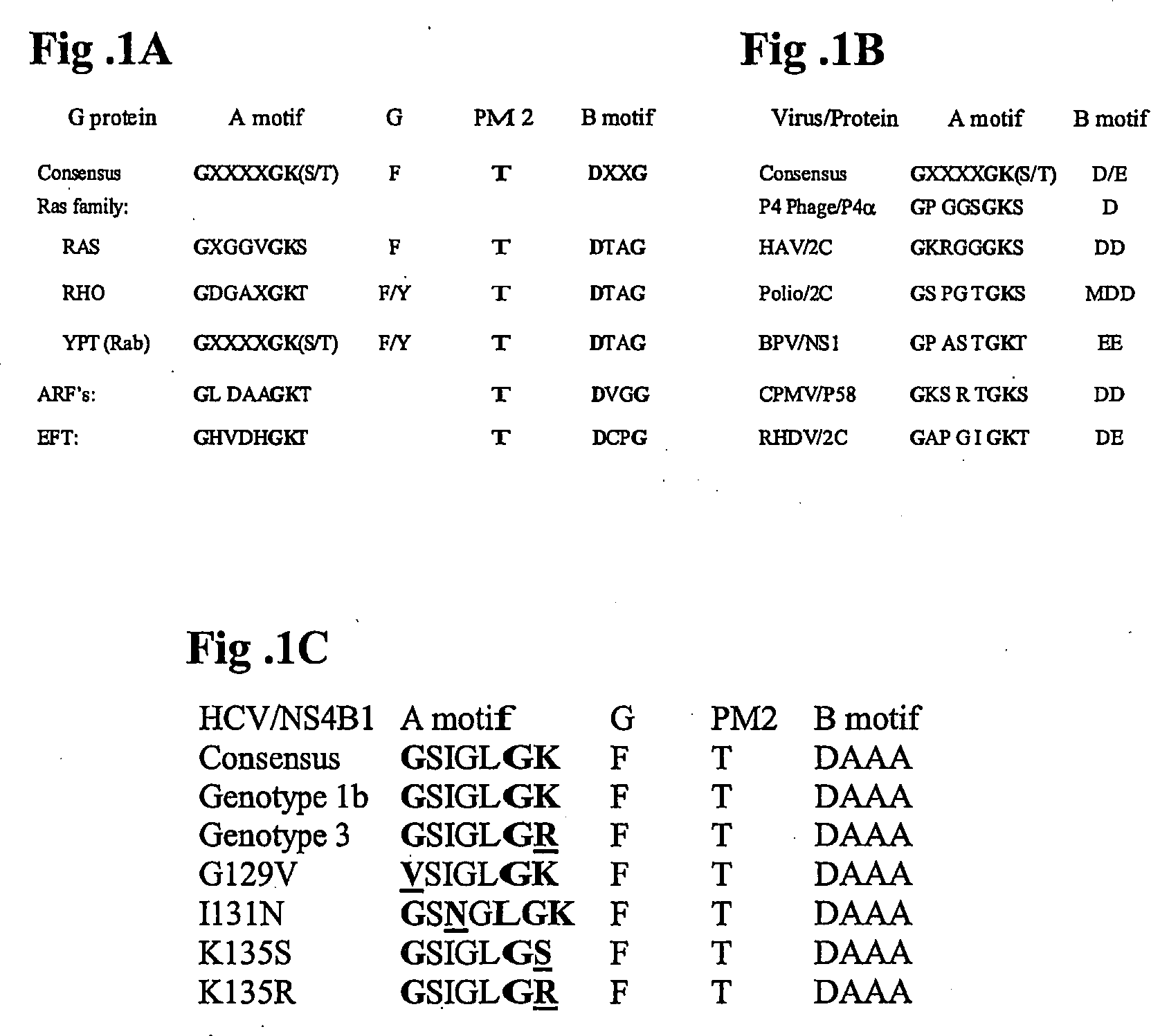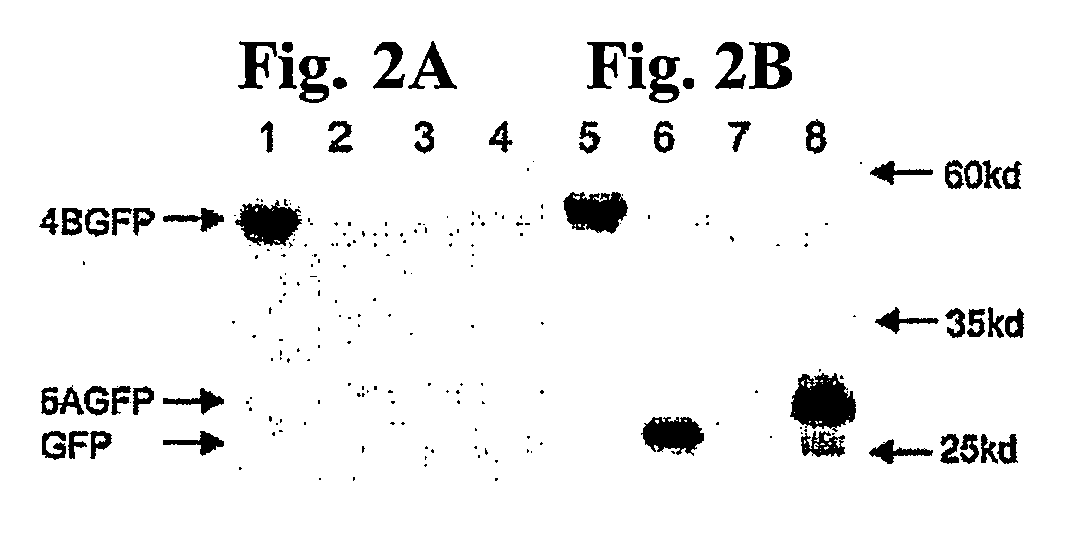Methods and compositions for identifying anti-hcv agents
a technology of anti-hcv agents and compositions, applied in the field of methods and compositions for identifying agents for the treatment of hcv infection, can solve the problem that not all patients are responsive to these therapies
- Summary
- Abstract
- Description
- Claims
- Application Information
AI Technical Summary
Benefits of technology
Problems solved by technology
Method used
Image
Examples
example 1
NS4B Contains a Nucleotide Binding Motif
[0151] Inspection of the NS4B primary sequence revealed the presence of a nucleotide binding motif (NBM) within the middle of NS4B. This motif consists of a set of conserved amino acids found in both the GTP-binding members of the G-protein family, as well as in the superfamily of viral proteins with nucleotide-binding domains. The most highly-conserved elements within these nucleotide-binding domains are the so-called A motif and B motif (FIG. 1, A and B). Because binding and hydrolysis of nucleotides mediate a variety of critical signaling, membrane trafficking, and membrane fusion events, we hypothesized that the NBM within NS4B may similarly be important for NS4B's role in HCV RNA replication.
example 2
NS4B Binds GTP
[0152] To determine the properties associated with the wild type and mutated versions of NS4B's NBM, a plasmid was constructed, termed NS4B-GFP, which encodes a NS4B protein with a C-temrnnal, in frame green fluorescent protein (GFP) tag. The latter allows for visualization in live cells and provides a convenient epitope outside of any future field of mutagenesis within NS4B. Importantly, GFP fusions to NS4B have been previously reported to have no difference in intracellular localization patterns from those described for wild type NS4B.
[0153] To test the hypothesis that NS4B can bind GTP, GTP-binding experiments using Huh-7 cells infected with a T7RNAP-expressing vaccinia virus and transfected with plasmids encoding NS4B-GFP, GFP, or mock transfected, were performed. Membrane preparations were prepared and aliquots incubated with 32P-labeled GTP-γ-4-azidoanilide (a UV-photoactivatable non-hydrolyzable GTP analog) essentially as previously described. Following a brie...
example 3
Mutation of NS4B's NBM Impairs GTP Binding
[0158] To test whether mutations within the NS4B NBM can impair GTP binding four mutants each harboring a single amino acid mutation within the NS4B NBM (see FIG. 1C) were designed. Ile131 Asn (or “IN”) has a single amino acid change at the X2 position of the NS4B NBM, a position that has been shown to be critical for NBM function in other proteins. The Lys135Ser (“KS”) and Lys135Arg (“KR”) mutants both have a single amino acid change at position 135. The Gly129Val (“GV”) is a single amino acid mutation at the highly conserved first position of the NBM A-motif consensus sequence. These mutations were introduced into NS4B-GFP and GTP binding assays were performed. As shown in the top panel of FIG. 3C, the GV and the IN NBM mutant proteins exhibited a two to three fold reduction in GTP binding on average compared to that of the wild type NS4B-GFP protein (lanes 10 and 9 vs. 8). In contrast, the KS and KR NBM mutants reduced GTP binding activi...
PUM
| Property | Measurement | Unit |
|---|---|---|
| Length | aaaaa | aaaaa |
| Hydrolysable | aaaaa | aaaaa |
Abstract
Description
Claims
Application Information
 Login to View More
Login to View More - R&D
- Intellectual Property
- Life Sciences
- Materials
- Tech Scout
- Unparalleled Data Quality
- Higher Quality Content
- 60% Fewer Hallucinations
Browse by: Latest US Patents, China's latest patents, Technical Efficacy Thesaurus, Application Domain, Technology Topic, Popular Technical Reports.
© 2025 PatSnap. All rights reserved.Legal|Privacy policy|Modern Slavery Act Transparency Statement|Sitemap|About US| Contact US: help@patsnap.com



